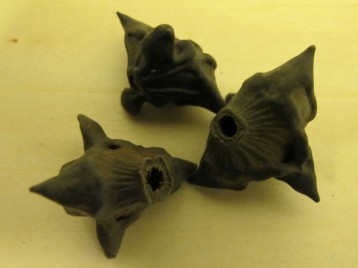Today we’re sharing the story of Tom McAvoy and his success in creating habitat for the New England cottontail and many other species. The original story by Denise Coffey can be found here.
When Tom McAvoy moved into a 1760 farmhouse on 115 acres in Scotland, his goal was to restore the land to what it looked like when it was a working dairy farm.
McAvoy had a soft spot in his heart for the land. His friend’s grandparents owned it, and McAvoy and his friend used to hunt there when they were younger.
When the opportunity presented itself, McAvoy secured the farm. He wanted to clear the overgrown pastures.
“My objective was simply to bring it back to the 1960s,” he said.
In the process of bulldozing the barways between the pastures, he had a visitor: biologist Travis Goodie, from the Connecticut Department of Energy and Environmental Protection.
Goodie asked McAvoy if he could conduct a study on the property, to see if New England cottontail rabbits lived there. McAvoy, who didn’t know much about the rabbit, agreed. A year-long study revealed significant populations of the species.
Goodie asked McAvoy if he’d be willing to talk with some people about a restoration program for the rabbit. He agreed. One day, 12 vehicles pulled into his driveway. Representatives from the U.S. Fish and Wildlife Service, the Natural Resource Conservation Service, and the Department of Energy and Environmental Protection Agency walked the property with McAvoy.
The discussion that ensued centered around the importance of preserving the habitat for the New England cottontail, a species of rabbit headed for listing on the Endangered Species Act.
“I still didn’t know why it was important,” McAvoy admitted. “I thought there were plenty of rabbits.”
The truth is, there are plenty of eastern cottontails, but not plenty of New England cottontails, the only species native to New England. And while the two species share many of the same characteristics, the latter has experienced a population decline because of habitat loss and fragmentation. New England Cottontails need early successional forests, rather than mature forests. They require thickets and shrubs, both for food sources and cover from predation.
McAvoy learned that the Scotland property was perfect for restoration efforts. Significant populations of the New England cottontail were found on 75 acres of the farm. He would be eligible for about 75 percent of the project’s cost. The catch was that funding would be taxable to McAvoy.
That prospect raised red flags for the banker and estate planner. But he told them he would consider it. USFWS Biologist Ted Kendziora offered to talk with McAvoy about all of his options and help assist and coordinate the agencies involved.
That assistance was important to McAvoy, who eventually agreed to the plan. Seven years, 25 contracts, and more than $50,000 later, the property has been made even more hospitable to the New England cottontail. But it was a labor intensive project that was developed in phases. The property was divided into sections and one section at a time was ‘transformed’ so as not to disturb the rabbits already there.
Non-native invasives like autumn olive, multiflora rose, and bittersweet had spread throughout land that had once been pasture. The plants grew quick and strong, leaving canopies that crowded out any other plants that might have tried to take a foothold in the understory.
The invasives crowded out native plants that provided food and protection for the rabbits. So one of the first orders of business was to pull the invasives up by their roots, leave the plants to die in the field, and let their bulk offer thickets for the rabbits to hide in.
Native shrubs were planted, and fencing put around them to keep deer from eating them. Piles of boulders were established on the property to provide habitat for the rabbits. Native shrubs were planted around those boulders and browse protection put in place. Protective channels were created where hedgerows existed between open fields. Trees and invasives were taken down so the rabbits could move more safely. Trees in a wooded lot were cleared and in their place, wild blueberry and raspberry flourished.

This is a New England cottontail. Credit: Tom Barnes / USFWS
“Improving habitat for the New England cottontail actually improved the habitat for lots of species,” McAvoy said.
Visitors to the farm have found acres of milkweed and monarch butterflies that depend on it for food. Rare birds have been identified. McAvoy said the land supports populations of turkey, deer, hawks, bobcat, and fisher cats.
“Anything we do to improve habitat is beneficial to a range of species,” he said.
It will take time to gauge the success of the restoration program, but McAvoy has traveled to Maine and Colorado to speak about its success with other conservation agencies and organizations. That has given him an opportunity to learn about habitat improvement projects around the nation.
In New England, projects are typically smaller, because of the size of available land parcels and the fragmentation due to denser human populations. But recognizing contiguous parcels of land and developing partnerships with private landowners has shown great promise.
“It’s critical to have a strategic approach,” McAvoy said. “And agencies have to be accountable to the public. You can’t just spend money without results.”

























